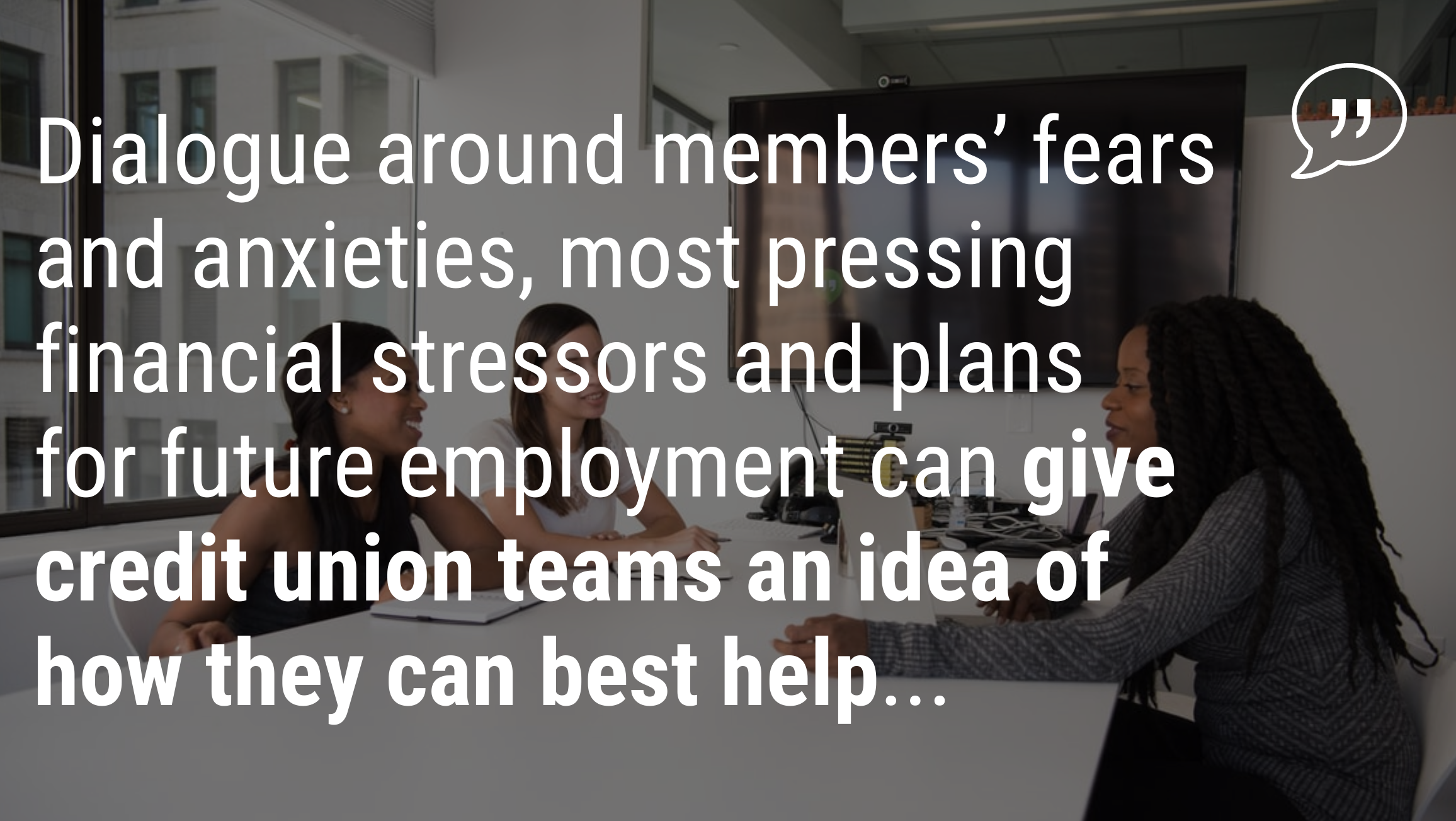How to Help Members After Federal Unemployment Runs Out
By Keith Dunlap, Managing Director, AdvantEdge Analytics
Federal unemployment assistance during COVID-19 has kept many families (and some say the U.S. economy) afloat throughout the pandemic crisis. While the near-term future of the benefit remains unknown, the extra $600 a week won’t last forever. Credit unions should mobilize now to help unemployed members prepare for, and eventually wade through, the financial disruption of an end to federal assistance.
A simple analysis of first-party member data is a good place to start. Through a three-tiered approach, credit unions can build a highly targeted member list that serves as the foundation for efficient and effective member outreach strategies.
Tier 1: Direct Deposit
A quick search for accounts that have received federal unemployment deposits will generate a good starting point for outreach. Some credit unions may even choose to stop here if the list is of manageable size. Others may need to segment the list and prioritize outreach to better identify members most likely to benefit from the credit union’s assistance. Additional segmentation options for consideration are provided in the tier 2 and 3 analysis below.
Tier 2: Employer Groups
For those credit unions that need to pare down the list of targeted members, sorting by a specific employer or general industry can bring the most critical needs to the top. Several employment sectors have been identified as most likely to experience long-tail consequences from the pandemic. The International Air Transport Association, for instance, said it does not expect to see a return to normal traveler volumes until at least 2024. Those members furloughed or formerly employed by the hardest-hit industries want to hear from their credit union.
 Tier 3: Communities
Tier 3: Communities
Some credit unions are based in hard-hit cities, meaning the lists of impacted members may still be sizable even after segmenting by deposit activity and employer / industry. In this case, a third qualifier to consider is racial and ethnic groups. According to the Centers for Disease Control, Black, Indigenous, and Latinx communities have been hit hardest by the coronavirus. Pew Research finds these groups are equally as impacted by the financial ramifications of the pandemic. In April, 61 percent of Hispanic Americans and 44 percent of Black Americans said they or someone in their household had experienced a job or wage loss due to the coronavirus outbreak. That’s compared to 38 percent of White Americans who reported the same.
After the list of targeted members has been finalized, the next step is to design a strategy that meets the needs of this group and any subsets within it. Two-way conversations are an ideal way to gather the insights necessary for crafting relevant solutions. Therefore, credit unions may choose to begin with calls to a select group of members across different personas.
Dialogue around members’ fears and anxieties, most pressing financial stressors and plans for future employment can give credit union teams an idea of how they can best help – whether that’s through loan modifications, the design of entirely new products or just regular check-ins via phone or text. Then, the credit union can scale those solutions out across the entire at-risk list, and potentially, the entire membership, assuming such an audacious move meets the credit union’s safety and soundness objectives.
There isn’t a credit union person in the movement who wouldn’t want to help every one of his or her members. As we all know, however, when you attempt to help all, you often help none. Providing financial solutions that are finely tuned to the real-life and right-now problems of the most vulnerable is why credit unions exist. It’s why your members chose your credit union in the first place, and it’s what will keep them turning to you long after the pandemic subsides.
